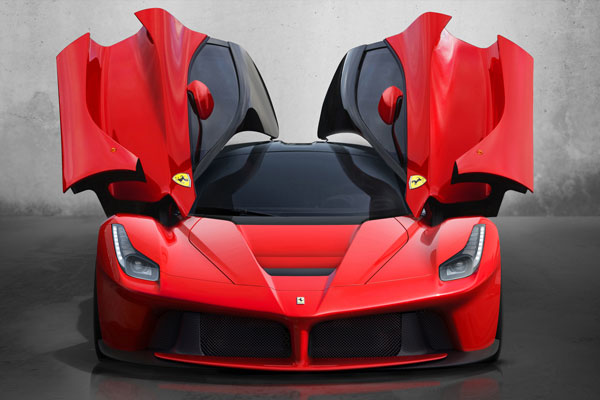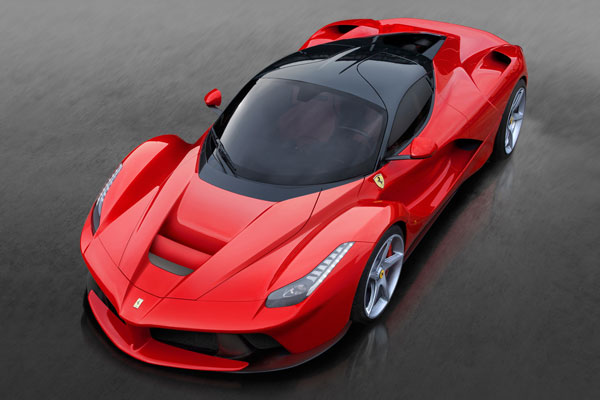Classic Supercar | Ferrari LaFerrari
Back in 2013, Ferrari unveiled what some consider its greatest supercar.
The limited-series special, of which just 499 were to be made, was called LaFerrari, and while the name is odd – Ferrari LaFerrari appears to translate into English as ‘Ferrari The Ferrari’ – the car is anything but. It is a spectacular piece of work.
So spectacular was it when first revealed, and such was the interest, that you couldn’t just walk into a dealership, plonk down the $1.4 million US dollars it cost to own, and then drive one away. Rather, you had to be invited by Ferrari to buy one. That’s right, a company built a product that you could only purchase if they invited you to do so. That was not, you would think, a winning marketing strategy, but this was, and is, no ordinary sports car.
As with any hypercar, one of the first things you look for is the performance numbers. And in that respect, the LaFerrari smashed it out of the park.
Underneath the beautiful exterior (has Ferrari ever made an ugly car?) is a powertrain that maxes out at 710kW and 900Nm and can push the LaFerrari from 0 to 100km/h in 2.5 seconds on to a top speed of 355km/h. Incredible.
And it is that powertrain that makes the LaFerrari special. Most of its power comes from a whopping mid-rear mounted, naturally aspirated, 6.3-litre V12 that delivers nearly 690kW. But paired up with that combustion monster is the real innovation of the LaFerrari – an electric system called HY-KERS.
A technology developed from the KERS (Kinetic Energy Recovery System) used in Ferrari’s Formula One cars, the HY-KERS consists of two electric motors and a 2.3kWh battery pack. The first motor is designed to supplement the output of the V12 and recovers kinetic energy during braking.
This energy gives the LaFerrari its extra boost. The second electric motor is driven by the combustion engine and generates power to keep the charge levels in the batteries constant while also providing energy for ancillary systems such as the lights.
Power is run through a 7-speed dual-clutch gearbox, and an F1 electronic traction control is integrated with the hybrid system. Also integrated is the Brembo braking system which includes lightweight calipers and carbon-ceramic material (CCM) discs.
The efficiency and potency of the hybrid set-up is very clever. For example, in cornering, the HY-KERS works to keep the V12’s revs high to guarantee better acceleration on exit.
There is plenty more clever stuff going on in the LaFerrari to keep those performance numbers so eye-wateringly good. The chassis is lightweight and strong, is made from four different kinds of carbon fibre, and designed and constructed using the same methods used for the company’s contemporary F1 car.
The car looks, and is, slippery in the air, and uses active aerodynamics. Diffusers front and rear as well as an underbody guide vane and rear spoiler generate downforce, and active elements deploy automatically depending on performance parameters that are monitored in real time by the car’s dynamic vehicle controls.
On the inside, while it is luxurious with plenty of digital goodies, the inspiration from F1 racing is clear, especially in the set-up of the driver’s seat, which is fixed and tailored to the driver. You want to change driving position? Instead of the seat, it’s the pedal box and steering wheel that are adjusted.
The driving position is, according to Ferrari, similar to that of a single-seater race car and was designed after consultation with the company’s F1 drivers of the time, Fernando Alonso and Felipe Massa, who played an active role throughout the car’s entire development process.
The LaFerrari was the first of the Italian company’s supercars to feature a hybrid power system and it appeared at around the same time as Porsche unveiled its hybrid effort, the 918 Spyder, and McLaren unwrapped its hybrid, the P1. Together, the trio became known as ‘the holy trinity’ and are still considered some of the most epic hypercars ever built.
Innovations and developments in the industry since 2013 have seen the creation of some truly outstanding new hypercars – the Rimac Nevera, the Aston Martin Valhalla, Lamborghini’s new Countach, the Tesla Model S Plaid, Ferrari’s own SF90 Stradale, and plenty more, are either all-electric or hybrids that offer serious competition to the holy trinity. However, the LaFerrari was at the start of the hypercar electrification shift and as such deserves a special place on any list of the most important, innovative sports cars of recent times.
VIDEO: LAFERRARI – OFFICIAL VIDEO
Source: Motor Trader e-Magazine (March 2022)
25 March 2022












